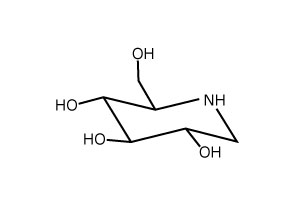What is Mulberry?
- HOME
- What are functional plants?
- What is Mulberry?
- What are functional plants?
- What is Chlorella?
- What is Eleuthero?
- What is Agaricus?
- What is Soba (fagopyrum spp.)?
- What is Mulberry?
Medicinal plants which have been used since ancient times
Mulberry (Morus alba L.) is a deciduous tall tree of the Mulberry family. It has been used as a feed for silkworms since ancient times, and it is reported that the beginning of silkworm culture was introduced into China about 5,000 years ago and Japan during the Yayoi period. Mulberry has been cultivated since then.
"Mulberry bark", the root bark of mulberry, is listed as the middle grade goods in the oldest Chinese book, "Shennong Ben Cao Jing" which was published in approximately 2,000 years ago, and it has been used for antitussive, expectoration, and so on.

Health effects of mulberry leaves are now being recognized again.
Not only the root but also every part of mulberry is used. For instance, mulberry leaves are used as mulberry tea, and it is reported that they are effective for stopping a cough, diuretic action, hypertension, and so on. In addition, the fruit of mulberry is called as mulberry fruit or mulberry, and it is used as a raw material for the fruit wine depending on the region. In recent years, the decline in the sericultural industry has led to a decline in mulberry cultivation. However, recent research has shown that azasugars contained in mulberry leaves have the inhibitory effect on rise of blood glucose levels after eating. The functionalities of mulberry leaves have attracted attention.
The functional ingredients of Mulberry
Mulberry leaves are rich in dietary fiber, calcium, vitamin E and polyphenols such as chlorogenic acid. In addition, mulberry leaves contain 1-deoxynojirimycin, galactopyranosyl-1-deoxynojirimycin and fagomine as characteristic functional ingredients. These ingredients are azasugars (iminosugars) which inhibit the activity of α-glucosidase. 1-deoxynojirimycin is similar to glucose in structure; therefore, it binds to α-glucosidase and inhibit the activity. (α-glucosidase: an enzyme that decomposes disaccharides into monosaccharides and absorb sugars in the small intestine) As a result, the degradation of disaccharides to monosaccharides is inhibited, and the absorption of glucose, etc. is suppressed. Therefore, the elevation of blood glucose level is inhibited.

The functionality of mulberry leaves
The following functions are reported.
・the inhibitory effect on rise of blood glucose levels
・antioxidative effect
・anti-aging effect
・anti-arteriosclerotic effect
・immunostimulatory effect
・laxative effect by intake of mulberry leaf powder
References
- "Report of charm and potentiality about Mulberry" written by Hikari Kondo, Yoshiki Matsui in the book "Kikan Koryo 2012, No. 256": Page. 57-64.
- " The inhibitory effect on rise of blood glucose levels after eating and the laxative effect on a person by intake of mulberry leaf powder" written by Yoshihiro Kojima in "Medical Science Digest 2016, vol.42, No.1": Page 33-36.

